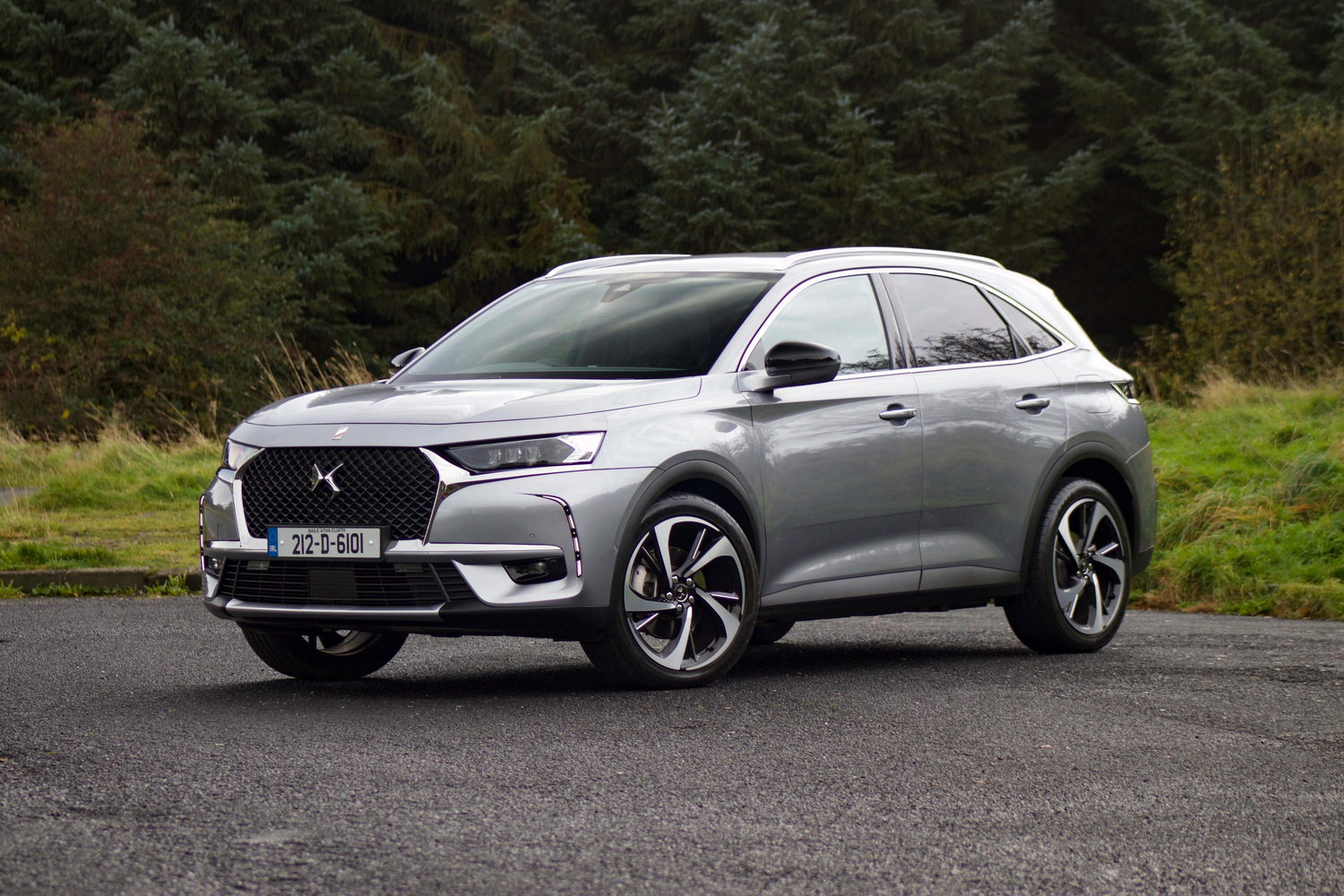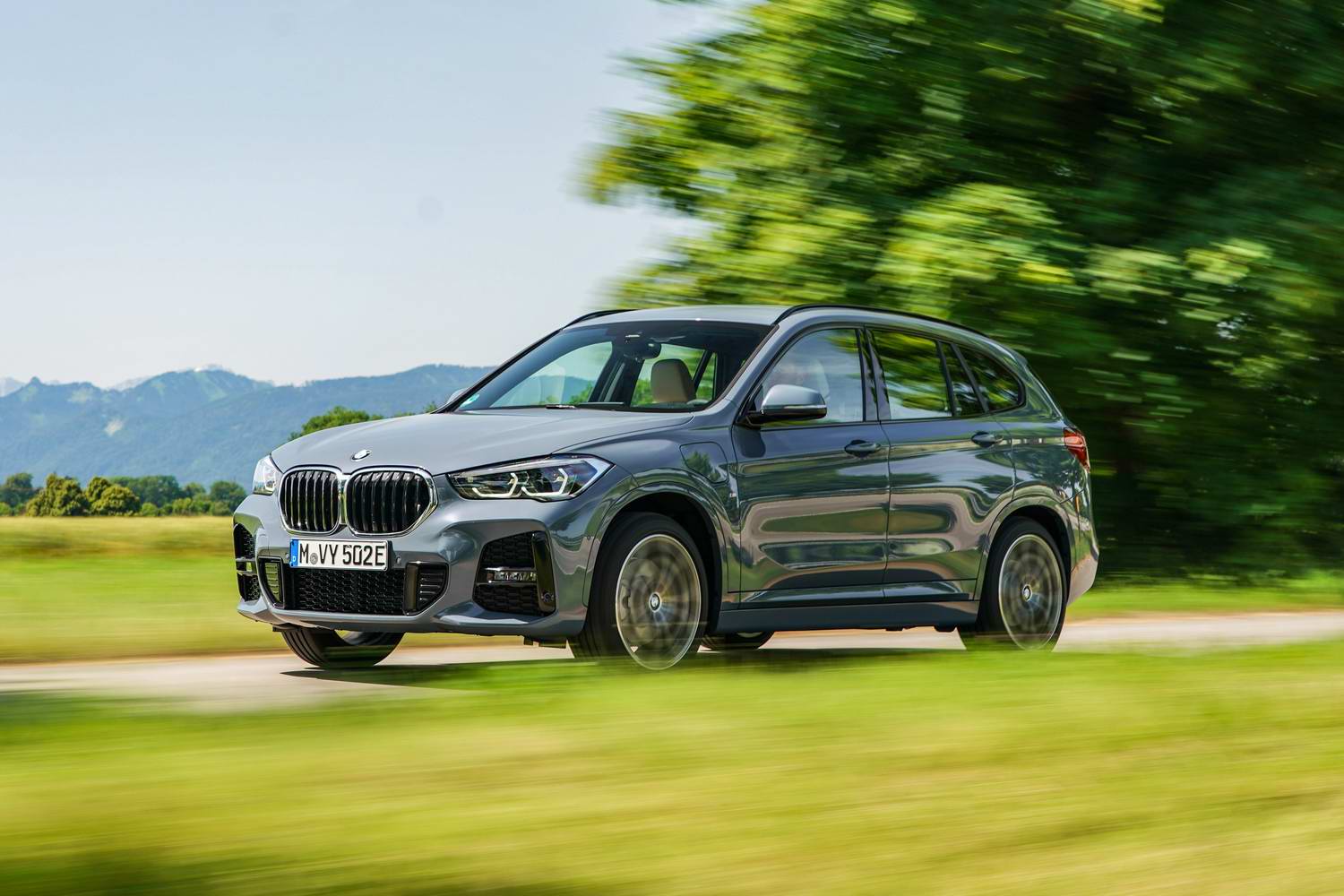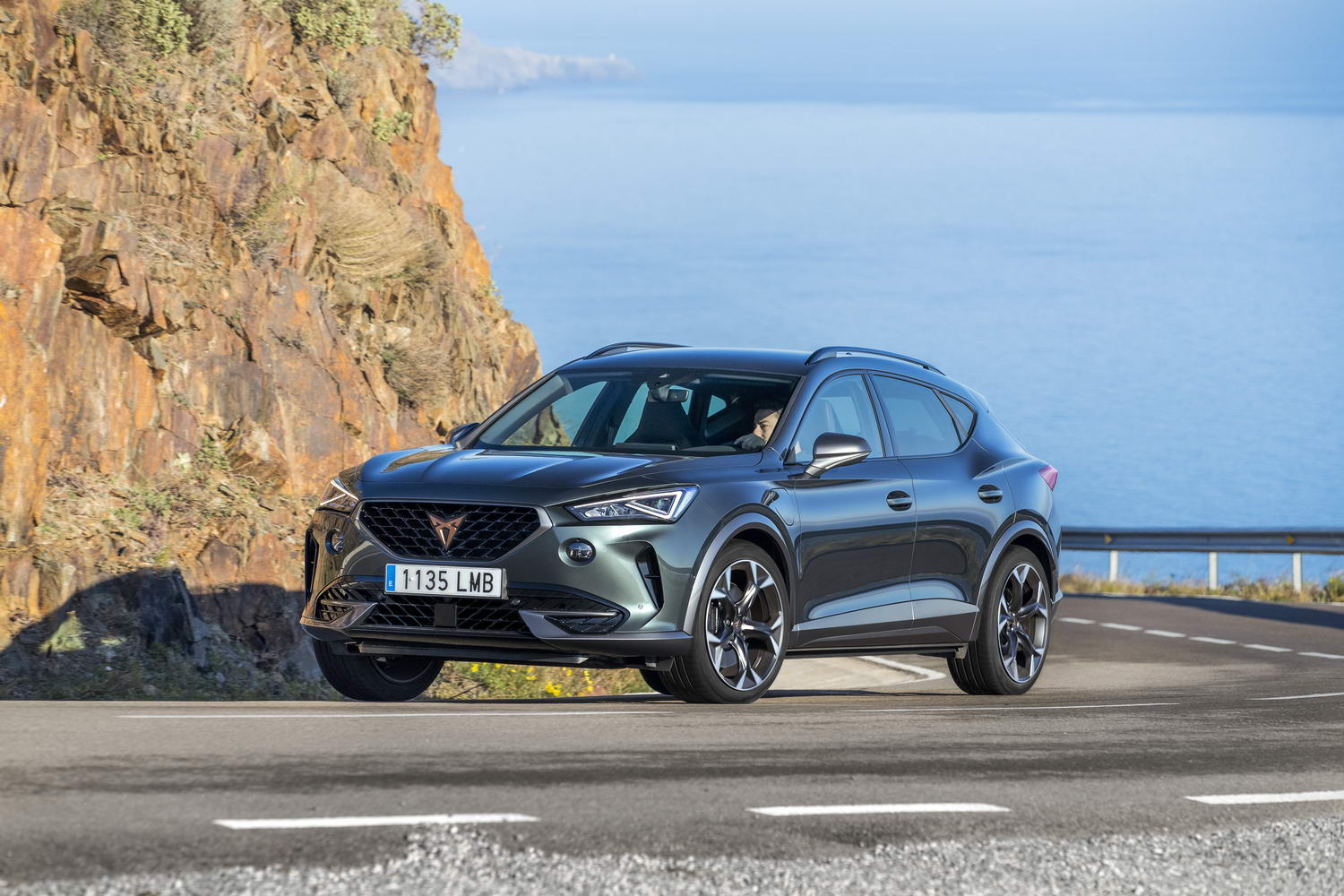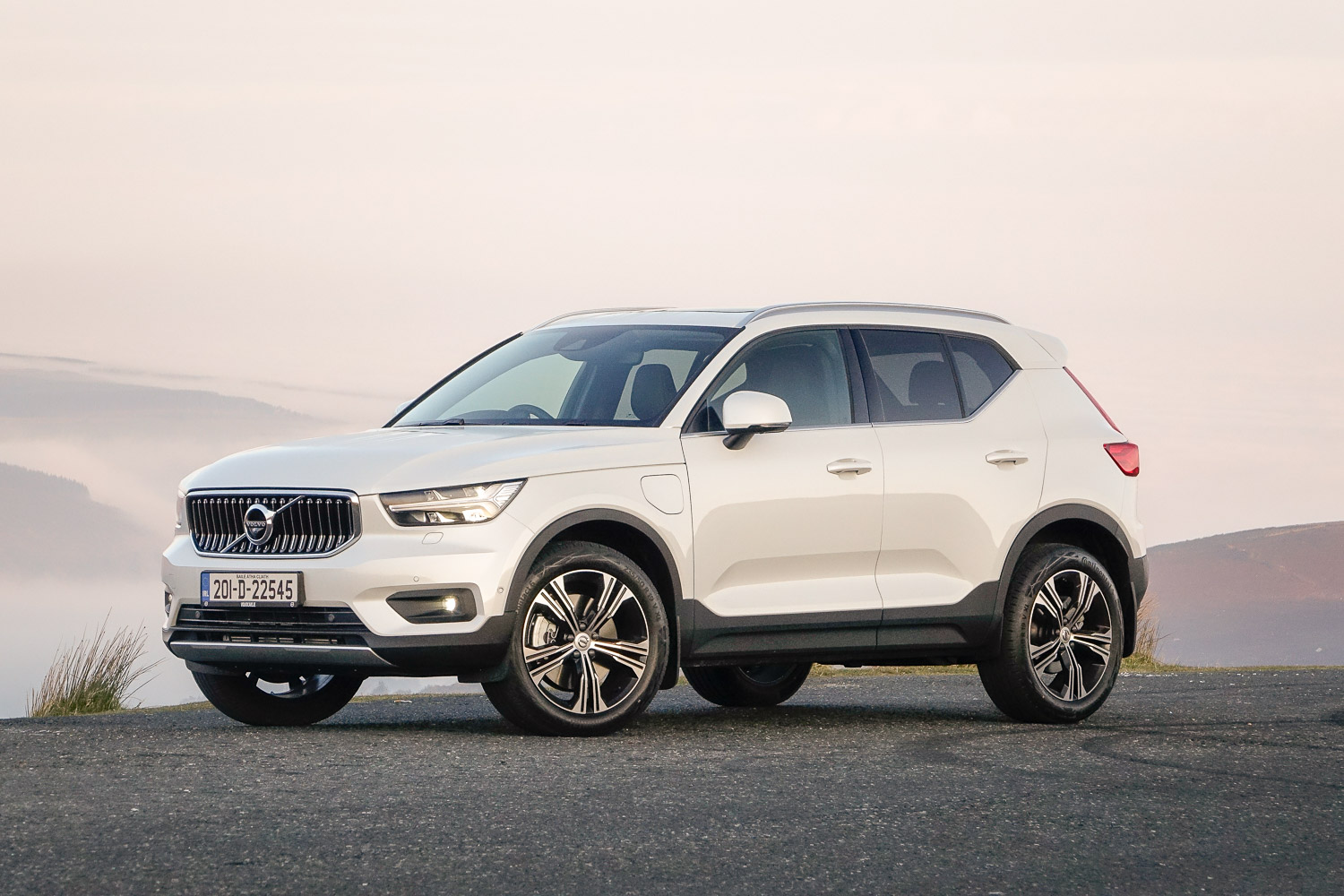DS 7 Crossback overview
The DS 7 Crossback is a five-door crossover or SUV. Its dimensions peg it between the Audi Q3 and Audi Q5, for example, and its pricing suggests that it straddles both sectors, too - depending on engine.
Here we're testing one of two plug-in hybrid options, badged E-tense 225. It uses a turbocharged 1.6-litre four-cylinder petrol engine, a 13.2kWh lithium-ion battery and an 80kW electric motor, all driving the front wheels. This exact setup has been used extensively across the PSA/Stellantis group of brands and it offers a compelling mix of performance and, potentially, low running costs.
The DS 7 Crossback model range
Irish pricing for the DS 7 Crossback starts at €45,990 on the road, which is for the 1.5-litre diesel 'BlueHDi' 130 model in Performance Line trim. The 1.2 PureTech 130 petrol option starts at €46,790 and, like the diesel, can be had as a Performance Line car or in Prestige guise.
The entry-level hybrid is the E-tense 225 in Performance Line trim, for €53,290. Topping the line-up is the E-tense 4x4 300, which uses a second electric motor to drive the rear wheels, resulting in a maximum power output of 300hp. It costs from €62,695 in Performance Line+ spec - a trim level reserved for the hybrids.
All versions use an eight-speed automatic gearbox and, other than the E-tense 4x4 300, are front-wheel drive.
DS is generous with equipment so even the standard Performance Line cars come with a 12-inch touchscreen, digital instrumentation, auto lights and wipers, climate control, Apple CarPlay and Android Auto compatibility, 19-inch alloy wheels, roof rails, keyless start, LED daytime running lights, reversing camera, rear parking sensors and lots of active safety systems.
The hybrid-only Performance Line+ spec adds DS Active LED Vision (advanced LED headlights), an electric tailgate, keyless entry, heated windscreen, front parking sensors, electric seat adjustment front and rear, heated front seats, a B.R.M clock and more.
Prestige versions get all that, an advanced safety pack, massaging front seats, unique leather upholstery and a host of aesthetic tweaks to set them apart further.
Go to dsautomobiles.ie to check for up to date pricing and range information.
The DS 7 Crossback interior
The DS 7's cabin is a mix of familiar PSA/Stellantis switchgear (shared with Citroen, Peugeot and Opel) and unique controls that are nothing short of quirky. It shouldn't work but mostly does.
In front of the driver is a large-diameter steering wheel with a sharply flattened bottom. We'd rather a proper circular wheel, but at least the rim of the DS's is quite slender - and overall, it's good to hold. Shame about the plasticky gearchange paddles behind, though in fairness, we didn't feel the need to use them once in our time with the car.
Ahead is a 12.3-inch screen containing the instruments, which are clear enough, and the layout can be altered via a convoluted menu system. That's found on the centrally-mounted 12-inch touchscreen. Shame the adjustments for climate control and heated/ventilated seats are also accessed via this method. There is a line of shortcut buttons below the screen, but they're touch-sensitive, too, with no feedback, and there's occasionally a delay between you pressing the button and anything happening, which is annoying to say the least. Sure, it all looks slick, but who cares when it doesn't work as well as good old-fashioned buttons?
Distracting you from that somewhat is the eccentric B.R.M analogue clock mounted up high on the dashboard above the engine start-stop button. This timepiece smoothly rotates into position when you start the car up, which is a welcome piece of theatre, while there are unique buttons all down the centre console, for the electric windows and parking brake, etc.
Thankfully, DS hasn't entirely sacrificed practicality for style, as the hidden storage bin under the central armrest is ginormous. Ahead of the drive selector, meanwhile, there's a wireless charging pad, a 12-volt socket and a USB-A port. Behind, there's a slot that looks like it should hold a smartphone (it does, but it tilts it the 'wrong' way for viewing - perhaps that's the point) and a pair of useable cupholders. The door pockets are below average in size, however, and the glovebox isn't huge, either.
Our test car featured the optional DS Inspiration Opera grained leather upholstery with a distinctive watch-strap structure, which is utterly lovely to look at and sit in.
In the back, there's plenty of width and a floor that is almost flat all the way across, so three adults should fit in relatively comfortably. Kneeroom and legroom are best described as adequate, however. It may, depending on the bulkiness of the seats, be possible to fit in three child seats, though as is the norm, there are ISOFIX mountings only in the two outer positions.
The seat back splits and folds down to create a flat surface if you need to carry longer loads, though the boot holds a useful 555 litres of luggage to the cover - and the hybrid's boot is no smaller than in other DS 7s.
The DS 7 Crossback E-tense 225 driving experience
As with all DS 7s, there's a distinct step up into the cabin, emphasising this car's status as an SUV. Once there, there's plenty of adjustment in the driving position and good visibility in all directions. A parking camera makes reversing easier and safer and even manoeuvring it out of a space you'll appreciate that it has a noticeably good (i.e., tight) turning circle.
Assuming there's charge in the battery pack, the E-tense model will move away from rest relatively silently, though we noted it still manages that most of the time when the battery charge meter is showing empty, which adds a subtle layer of refinement to the experience. When the turbocharged 1.6-litre petrol engine kicks in, it does so unobtrusively, and its machinations are well-insulated from the passenger compartment for the most part.
The exception to that is if you toggle the Drive Mode selector into the Sport setting. This adds a red tinge to the digital instruments, reduces the power steering assistance, sharpens up the accelerator response and maximises use of the engine and electric motor together. The eight-speed automatic gearbox also holds onto ratios a little longer, which means you hear the engine at work a lot more of the time. Sure, it's undoubtedly quick when you do all this, but it's also a little raucous, which doesn't suit the car at all.
By default, the car uses the Hybrid setting, which chops and changes (unobtrusively) between using the electric motor and the engine as needs be. There's also a Comfort mode that softens the suspension further and reduces response to accelerator input, which is fine for long motorway journeys, but otherwise leaves the car feeling a little flat-footed. You can also select the Electric mode to force the car to use only the available battery charge for zero-emissions running.
And, if you feel the need, there's an 'eSave' function where you can instruct the car to charge up the battery as you drive along, the idea being it's ready for use in a built-up area at a later stage. Obviously, that uses more fuel. There's a 'B' setting for the transmission, too, which increases the level of brake energy regeneration to help further charge up the battery pack.
Incidentally, the E-tense hybrid models get a fancy adaptive damping system as standard. Called 'DS Active Scan Suspension,' it uses a camera to scan the road ahead and inform the damping control unit what's coming so the wheel-by-wheel damping force can be adjusted to suit. There's nothing to indicate how this is operating when on the move, but in general the DS 7's ride is pliant without being too soft and body control in all but the most extreme conditions is good. The baseline for the damping changes depending on driving mode, too, and we found the Sport setting uncomfortable over a bumpy mountain road without any useful payback in terms of control.
Indeed, while the DS 7 is commendably competent in a wide range of conditions, it's not a particularly interesting car to drive. There's little or no communication back through the steering wheel and even the brake pedal has a vaguely dead feel to it. After trying all the settings, we reverted to the default Hybrid mode as it's the best-judged.
Nonetheless, the DS 7 is a safe and secure way to cover ground. It feels more at home on the motorway, where it cruises in a civil fashion with little wind roar and only a distant hum from the engine bay if it's not running on electric power. The wide tyres aren't too noisy, but that does depend on the road surface.
We didn't have the opportunity to keep the battery pack topped up during our time with the car, so the observed average fuel consumption figure of about 7.0 litres/100km should be easy to better. DS quotes an electric range of between 50- and 58 kilometres depending on specification, and it would appear that 40km at least is easily achievable.
Rivals to the DS 7 Crossback E-tense
As mentioned at the start of this article, due to its in-between size, the DS 7 could be compared to a wide variety of machinery from two distinct size segments. Along with the Audi Q3 and Q5, there's the BMW X1 and X3 to consider, not to mention the Mercedes GLA and GLC, Lexus NX, Jaguar E-Pace and F-Pace and the Volvos XC40 and XC60.
When it comes to plug-in hybrid SUVs, the DS 7 E-tense's starting price of about €53,000 puts it up against the likes of the Audi Q5 TFSI e, the BMW X1 xDrive25e and the Volvo XC40 hybrid. It's worth mentioning that the new Opel Grandland Hybrid uses the same powertrain as the DS 7, as does the Peugeot 3008.
Our verdict on the DS 7 Crossback E-tense 225
The biggest challenge the DS 7 faces does not necessarily come from rival cars but is one the DS brand as a whole has to grapple with - establishing a new premium marque in a cut-throat market. With all the talk of 'disrupting' brands and the move to electrification, there is potential for DS to make inroads, but it will be an uphill climb in the short-term, without a doubt.
That aside, the DS 7 Crossback is quite a likeable take on the mid-sized premium SUV formula. It's attractive in an unassuming way, it has an interesting cabin, loads of equipment and it's competent on the road. The plug-in hybrid options aren't cheap, but they're 'of the moment' and should be considered by those that have the option to plug a car in for charging easily. It certainly makes for a refreshing change from the default premium models.
What the rest of the team think
The DS 7 Crossback is targeted with taking on established cars in the premium segment and on some levels it does manage to pull it off. A reasonably comfortable ride combined with the relative exclusivity of its design makes it one of the more interesting SUVs on sale, but these aspects only partially justify the premium price.
Dave Humphreys - Road Test Editor
While I still think that the new DS 4 is the most complete all-round model from the DS brand thus far, the DS 7 charmed me rather more than I thought it might. True, €50-odd-thousand is a lot of money for a car from a brand that few people have heard of, but the DS 7 performs better against established rivals from Audi, Mercedes and BMW than you might expect. It’s also better value, coming with more standard equipment than its German rivals - you’d have to spend closer to €70,000 to get the same kit as this DS 7 has in an Audi Q5, for example. The DS 7 is a handsome car, too, and hugely comfortable and refined to drive. The plug-in hybrid system has its limitations, of course, but overall thirst isn’t too bad and the DS 7 is more engaging to drive than I expected. It’s a solid marker on the DS brand’s route to acceptance, I reckon.
Neil Briscoe - Editor-at-large



























